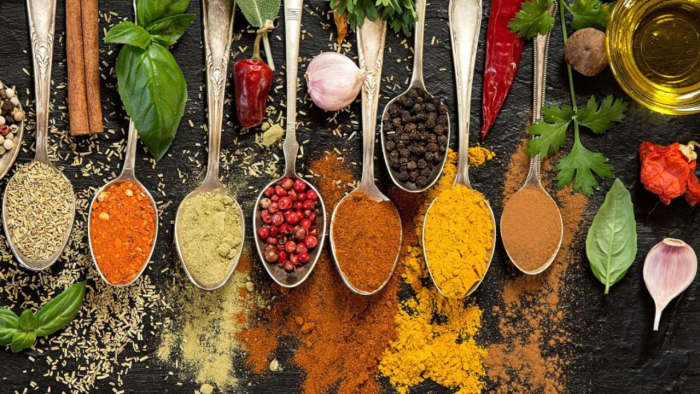
Venture Lab is open to provide guidance, mentoring, and investment in this industry. If you have a startup vision and are willing to work, contact us for more information and advice regarding your startup.
The global spice market, valued at billions of dollars, is a thriving sector within the food and beverage industry, offering numerous opportunities for innovative entrepreneurs. With increasing consumer demand for authentic flavors and a growing interest in health and wellness products, the spice industry presents a tantalizing prospect for startup ventures.
The spice industry is deeply rooted in tradition, yet it continually evolves to meet modern consumer trends. Major producers and consumers span continents, making it both a global and local market. Spices not only add flavor to dishes but are also prized for their health benefits, contributing to their widespread appeal in culinary traditions worldwide.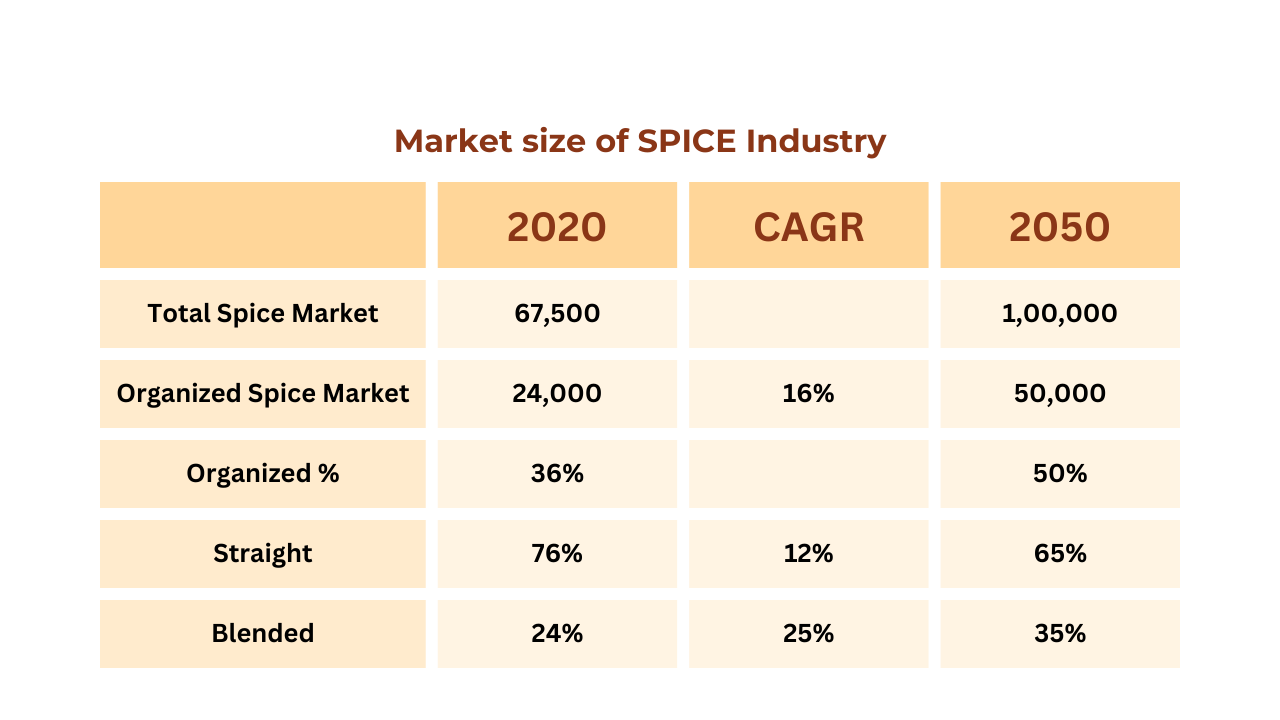
The spice industry holds immense importance in the agricultural landscape, providing livelihoods to millions of people across India. With its diverse agro-climatic regions, India boasts the cultivation of approximately 63 different spices, although only around 21 of them hold significant commercial value. These include staples like black pepper, chilies, ginger, turmeric, garlic, and cardamom, along with others such as coriander, cumin, and fenugreek.
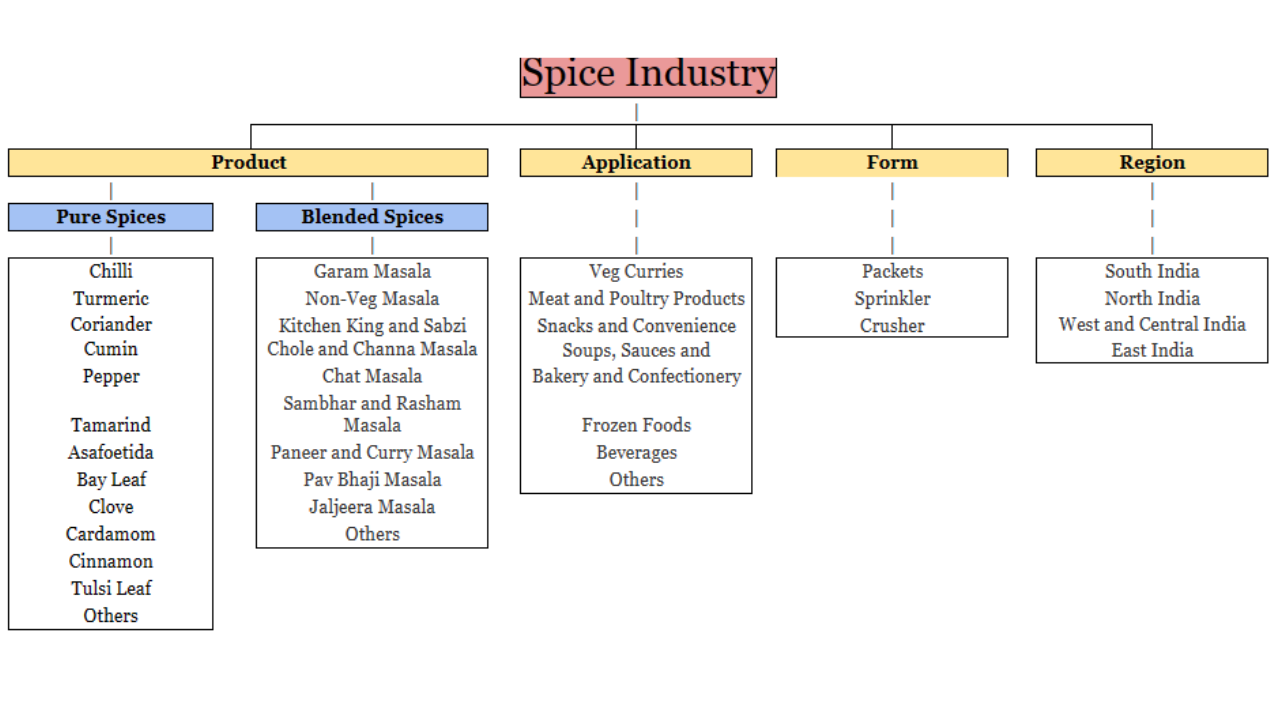
Segregation of Spice Industry Based on Product, Application, Form, Region
India stands out as the world's largest producer of spices, with an impressive production volume of 106.79 lakh tonnes sourced from an estimated area of 45.28 lakh hectares. Among these spices, garlic leads the production charts, closely followed by chilies, ginger, and turmeric. In terms of cultivation area, cumin takes the top spot, followed by chili, coriander, and garlic.
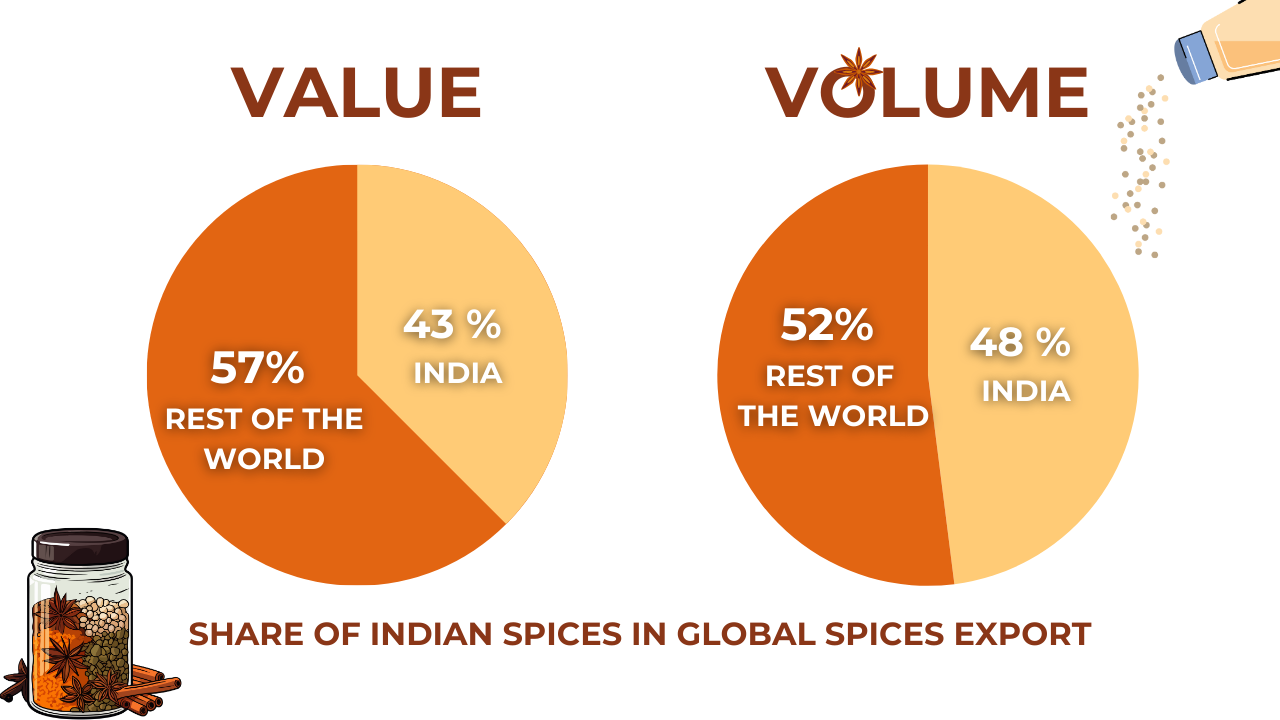
This robust production and cultivation landscape underscores India's pivotal role in the global spice trade. The country's rich heritage and agricultural diversity contribute to its ability to cater to diverse spice demands domestically and internationally. Additionally, the spice industry plays a crucial role in supporting rural economies, providing employment opportunities, and driving economic growth across various regions.
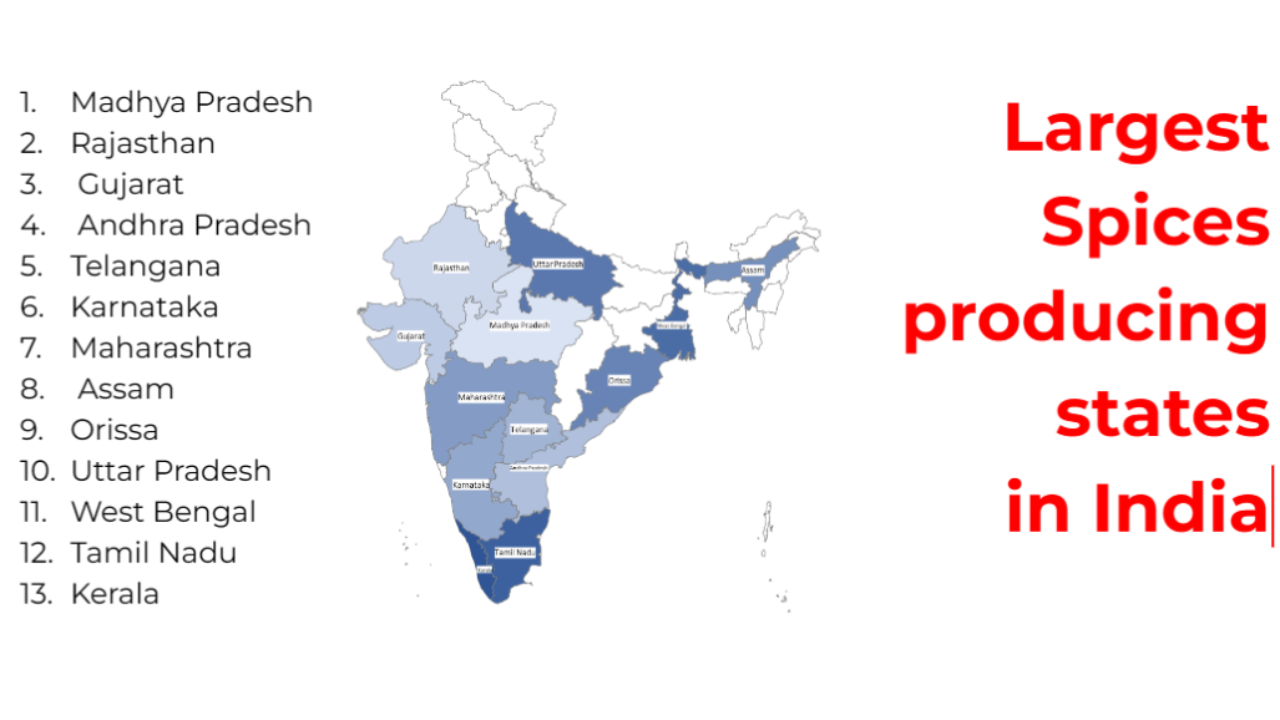
Despite the commercial significance of certain spices, there remains to be more scope for further exploration and development within the industry. By leveraging advancements in agricultural practices, technology, and market insights, India can continue to strengthen its position as a global leader in spice production and trade. Furthermore, initiatives aimed at sustainable cultivation practices and value addition can enhance the competitiveness and resilience of the Indian spice sector, ensuring its continued prosperity for generations to come.
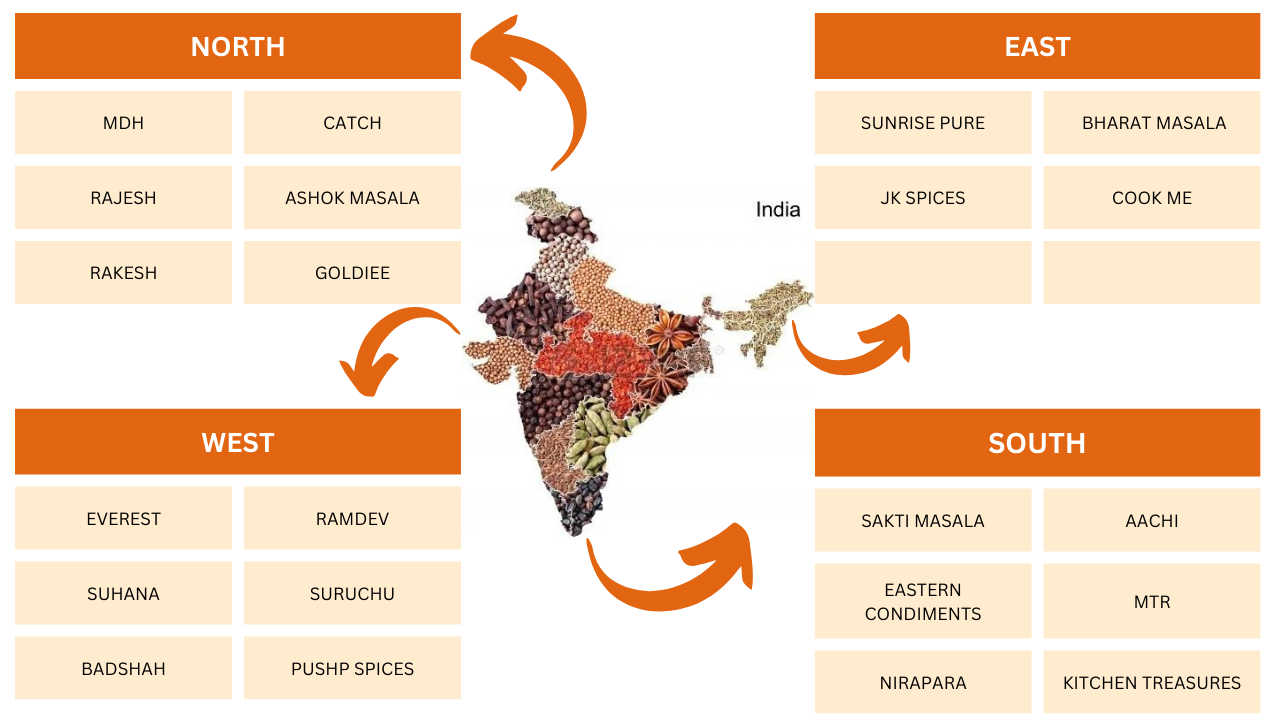
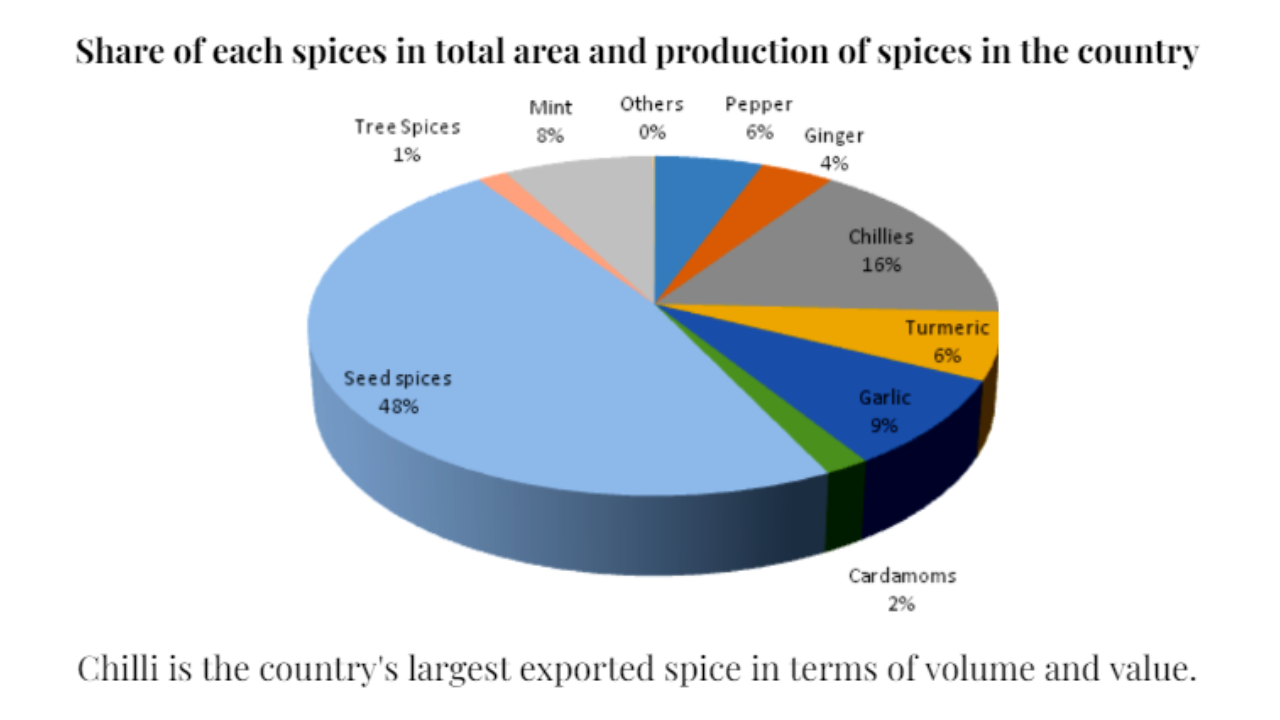
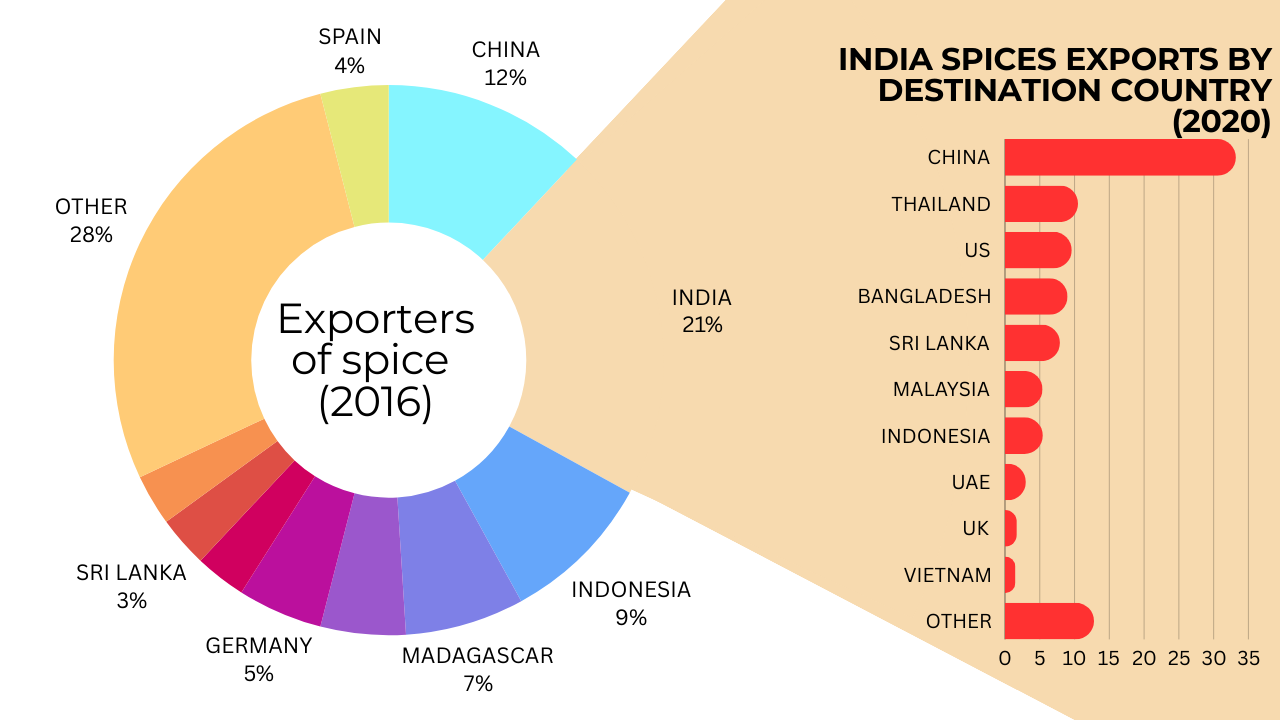
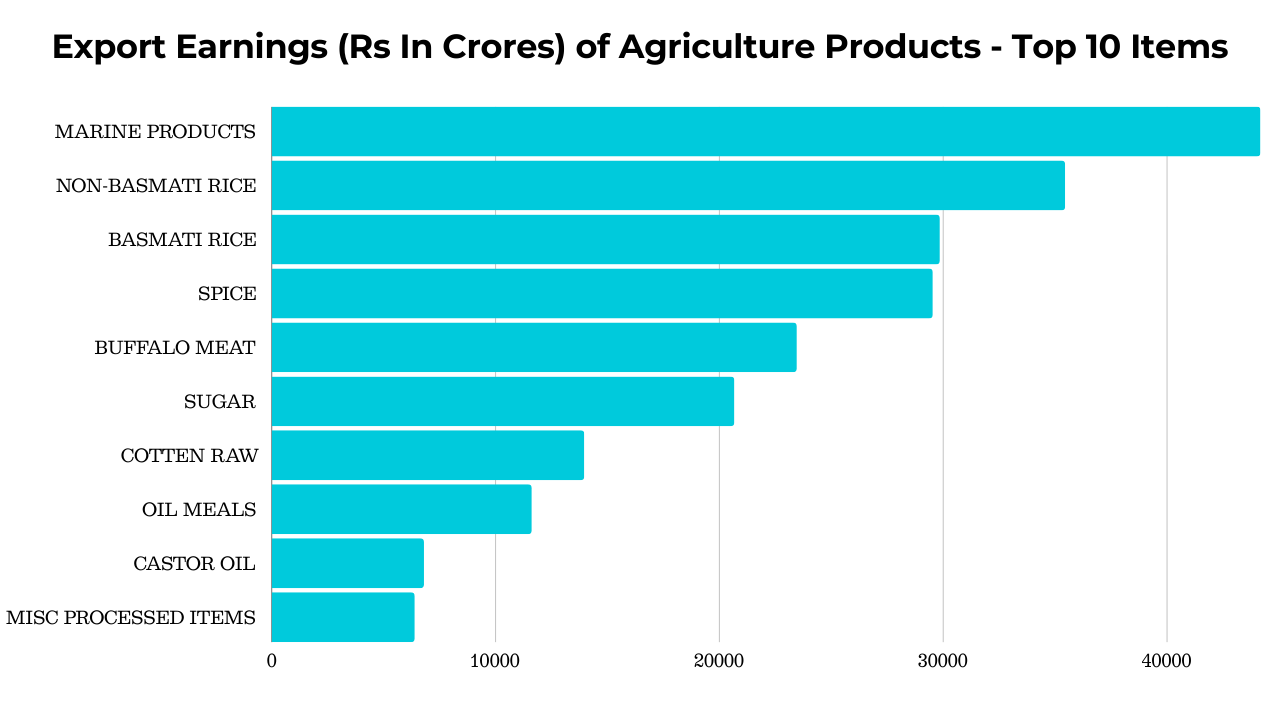
Spices are the fourth largest export earner among principal agriculture commodity
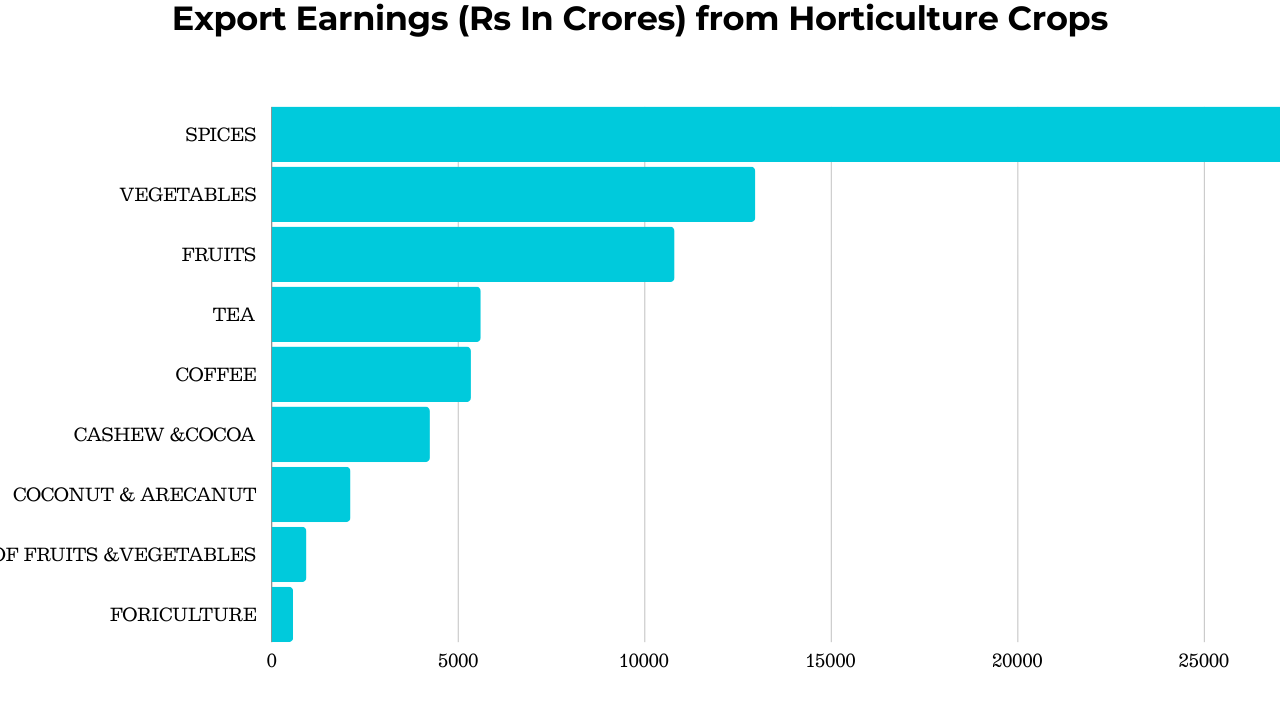
Spices are the largest export earner among principal Horticulture commodity
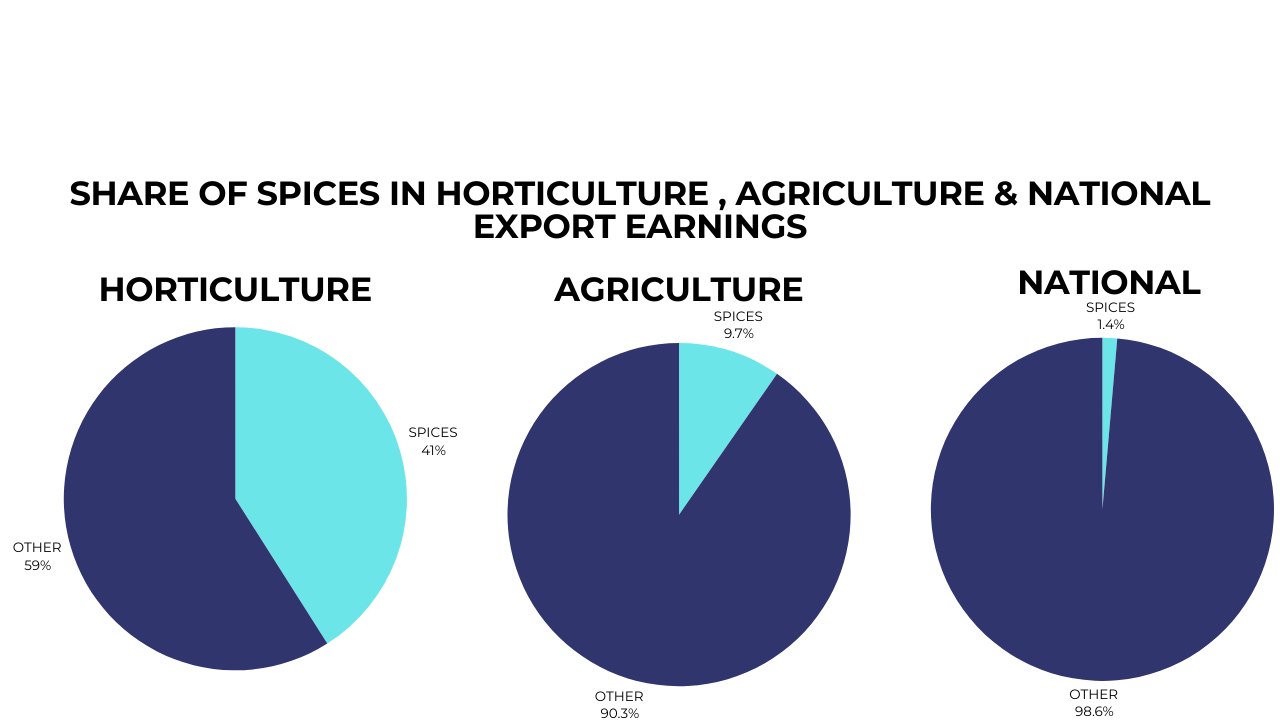
Share of spices in horticulture, agriculture, and national export earnings
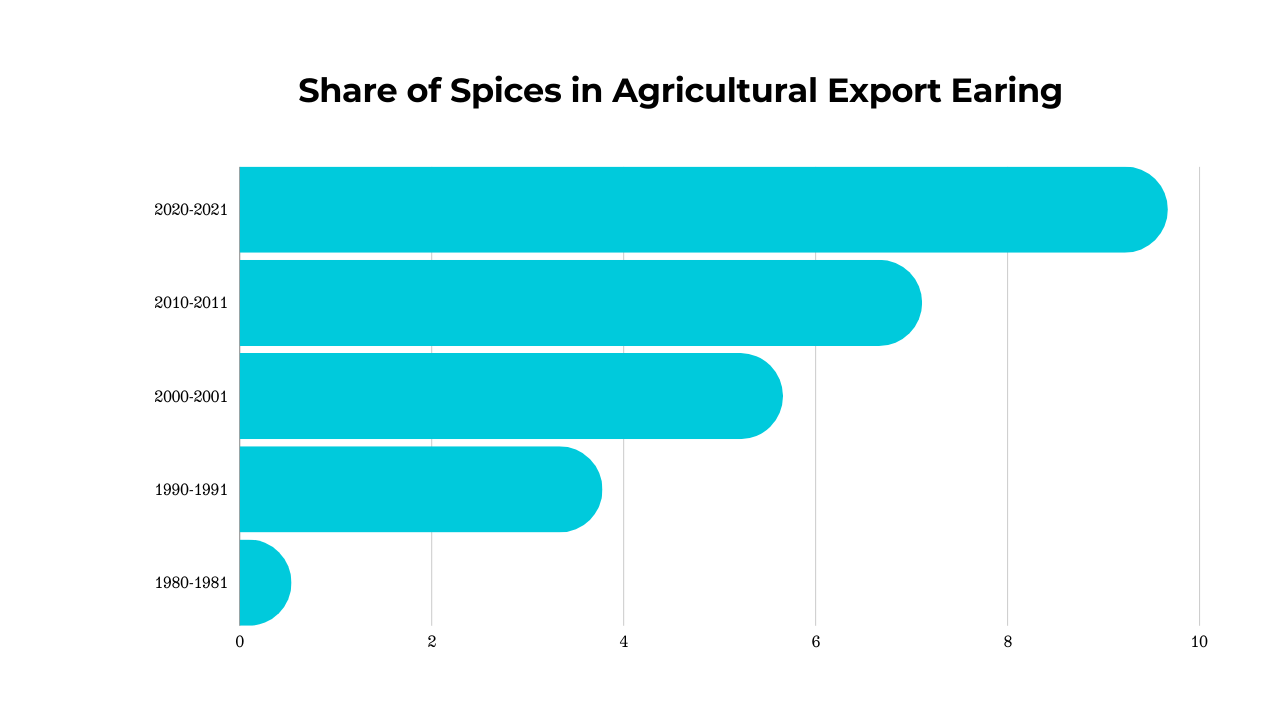
Increasing the share of spices export earnings in agriculture
In the Indian spice industry, several key players contribute significantly to production, processing, and export. These players play pivotal roles in shaping the industry's landscape and driving its growth. Here are some of the key players in the Indian spice industry:
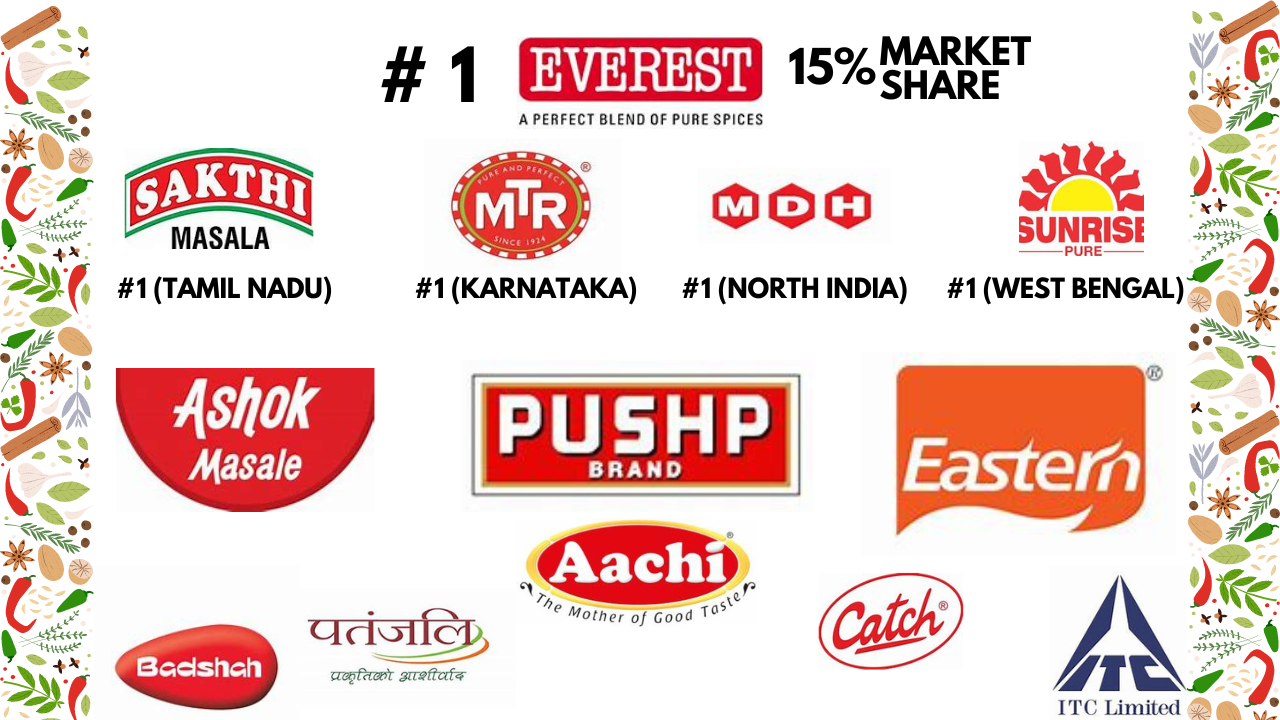
Innovative Product Offerings: Meet the demand for unique and convenient spice blends or formulations tailored to modern consumers' busy lifestyles.
Health and Wellness Focus: Tap into the growing interest in health-conscious products by offering organic, non-GMO, or ethically sourced spices with proven health benefits.
Sustainable and Ethical Sourcing: Differentiate your brand by prioritizing transparency and sustainability in sourcing practices, catering to environmentally conscious consumers.
Technology Integration: Leverage technology to optimize operations, improve supply chain efficiency, and ensure product quality, enhancing competitiveness in the market.
Direct-to-Consumer Model: Utilize e-commerce platforms to reach a broader audience and bypass traditional retail channels, offering personalized experiences and convenience to consumers.
Addressing Industry Challenges: Key Strategies for Success
Supply Chain Efficiency: Enhance transparency and traceability in the supply chain through technology solutions, ensuring high-quality and authentic products reach consumers.
Consumer Education: Bridge the gap in consumer knowledge about spices through educational marketing campaigns and engaging content, fostering appreciation for premium products.
Regulatory Compliance: Navigate regulatory requirements with diligence and invest in compliance and safety testing to build trust and credibility with consumers.
Quality Control: Prioritize rigorous quality control measures to deliver consistent and authentic spices, distinguishing your brand in a competitive market.
Spice Up Your Entrepreneurial Journey
For entrepreneurs seeking a flavorful venture, the spice industry offers a ripe opportunity for innovation and growth. By embracing consumer trends, leveraging technology, and addressing industry challenges, startups can carve out a niche and thrive in this dynamic market. The time is ripe to embark on a spicy entrepreneurial journey, bringing unique flavors and experiences to consumers worldwide.